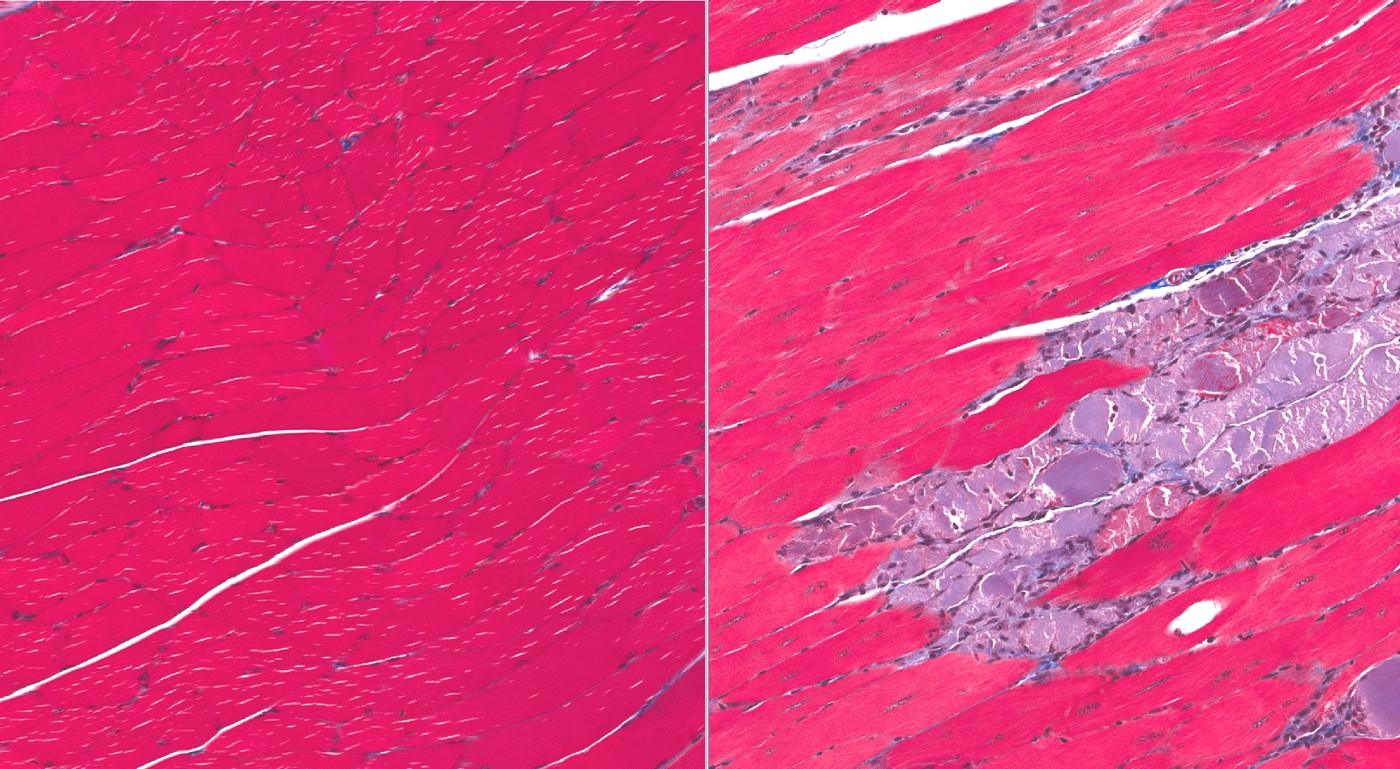SMA Muscle Breakdown Differs with Severity in Mouse Study, but Precedes Neuronal Death

In a study partly funded by Cure SMA, researchers from Ottawa Hospital Research Institute show that patterns of muscle breakdown in spinal muscular atrophy (SMA), occurring before any apparent neurodegeneration is taking place, differ depending on the severity of disease in mice.
The report, “Differential induction of muscle atrophy pathways in two mouse models of spinal muscular atrophy,” which appeared in the journal Scientific Reports, emphasize that treatments targeting the muscles might be needed to complement attempts to increase the low levels of survival of motor neuron (SMN) protein underlying the disease.
The fact that SMA stems from genetic mutations in the SMN gene, leading to the death of motor neurons, has led to a natural focus on factors mediating neurodegeneration. Until recently, researchers also believed that the breakdown of muscles was a direct consequence of the dying motor neurons.
Lately, however, studies in mice have shown that muscles start breaking down long before any damage to motor neurons becomes apparent. Also, experiments with increasing SMN in the central nervous system show that higher levels do not entirely reverse the condition, suggesting that the mutation affects pathways in other tissues.
To better understand how SMN mutations directly affect muscles, Dr. Rashmi Kothary and his team used several different mouse models, capturing various severity types of SMA, and studied molecular pathways of muscle breakdown.
They soon realized that depending on the severity of the condition, different types of molecular breakdown pathways were activated. They could also confirm earlier findings that muscle degradation starts before neurons die.
The research team managed to reverse key molecular changes linked to muscle wasting in the mice using a compound called trichostatin A. While the drug is not suitable to treat humans, the experiments prove that developing drugs specifically targeting the muscle breakdown might be a promising strategy complementing treatments aiming to prevent motor neuron death.
Commenting on the study in a press release, Cure SMA emphasized the implications of the findings for treatment approaches.
“This paper from Dr. Kothary further highlights the importance of combination therapies and multiple treatment approaches for all types, ages, and stages of SMA,” the organization wrote.







